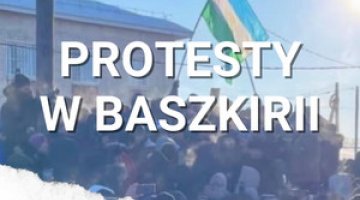Russia is putting migration pressure on the border with Finland
For several days Finland has been facing a rise in the number of asylum seekers arriving on Finnish territory from Russia via crossing points on the southern section of the border. Most of these migrants are third-country nationals who do not hold the necessary documents. The Finnish side has accused the Russian authorities of altering their previous behaviour and allowing individuals without the required documents to reach the Finnish border. These people frequently come onto Finnish territory on bicycles, as road traffic is allowed on the basis of a local agreement at several border crossings in the region while pedestrian traffic is prohibited. On 9 November 2023, Helsinki introduced a ban on crossing the border in this manner, but this has not curbed the migration flow. On 12 November, the Finnish Border Guard announced that it had registered 91 asylum seekers since August. However, on the following days their number increased rapidly: on 13 November 39 such individuals were recorded, on 14 November 55 and on 15 November 75.
In response to these developments, on 16 November the centre-right government of Prime Minister Petteri Orpo decided to close four of the eight border crossings in South Karelia and North Karelia (Vaalimaa, Nuijamaa, Imatra and Niirala), starting from 18 November. Asylum applications will only be accepted at two border crossing points located at the central section of the Finnish-Russian border, namely at Vartius (Kainuu region) and Salla (Lapland).
Commentary
- The Finnish authorities have very clearly stated that the recent increase in migration pressure is Russian-inspired. On 14 November, Prime Minister Orpo said that asylum seekers do receive assistance in reaching the border. On 16 November, following her conversation with the Finnish prime minister, the President of the European Commission Ursula von der Leyen directly accused Moscow of instrumentalising migration as a tool to target Finland. Finnish President Sauli Niinistö has linked the migration pressure with the imminent signing of a Defence Cooperation Agreement (DCA) between Helsinki and the United States (for more see ‘Sweden and Finland: towards Defence Cooperation Agreements with the US’). The present situation on the Finnish-Russian border is a repeat of the events that unfolded there at the turn of 2016, albeit on a smaller scale. In 2015 alone, Finland had recorded a nine-fold increase in the number of asylum seekers compared with 2014 (around 32,500 individuals). Back then, Russia used migration as a hybrid tool against Finland in an attempt to force Helsinki to normalise bilateral relations after the annexation of Crimea in 2014, to facilitate the improvement of Moscow’s relations with the European Union, and to discourage Finland from increasing its military cooperation with NATO and the US.
- Although at present the number of asylum applications is still small, Finland has reacted very swiftly. The Finnish government has also stressed that further restrictions on border traffic are likely. Helsinki is better prepared now than it was back in 2015: several months ago, it introduced amendments to its Border Guard Act to create a legal basis for introducing various measures in anticipation of such potential hybrid activities. These include restricting border traffic and concentrating the process of accepting asylum applications at selected border crossing points. 2023 saw the launch of the construction of a barrier on Finland’s border with Russia, whose planned total length is 200 km: so far, a test fence has been put up along a 3-km long section of the border. The whole barrier will be divided into eight sections, and it should be completed in 2026. The idea of erecting the barrier was inspired by various factors including the Polish experience following the 2021 migration crisis on the Polish-Belarusian border, which was triggered by Belarus and Russia. It cannot be ruled out that the plan will be accelerated in the wake of these recent events (for more see ‘The Baltic states and Finland: fencing themselves off from Russia and Belarus’).
- Kremlin spokesman Dmitri Peskov expressed “deep regret” about the fact that the Finnish authorities “have embarked on the path of deliberately distancing themselves from the former good level and nature” of Finland’s relations with Russia. This reaction should be viewed as extremely hypocritical, because on 20 October the Russian government unilaterally terminated the cross-border cooperation agreement it had signed with Helsinki back in 2012. This agreement contained a provision regarding cooperation in organising and equipping the border crossing points. This document will expire on 24 January 2024, following a 90-day notice period. In a note handed to the Finnish ambassador in Moscow notifying the Finnish side of the agreement’s termination, the Russian foreign ministry accused Helsinki of “carrying out confrontational actions targeting Russia and discriminating against Russians on grounds of their nationality in visa-related issues”. Finland’s strong response to Russia allowing the migrants to pass through Russian border crossings without Finnish visas will probably not deter the Russian leadership from continuing this practice. It should rather be expected that the migration pressure will shift to the remaining border crossing points (in 2015 it was channelled towards the Salla border crossing point, which continues to operate), and/or that the migration flows will be directed to those sections of the border which are located in between the checkpoints.




